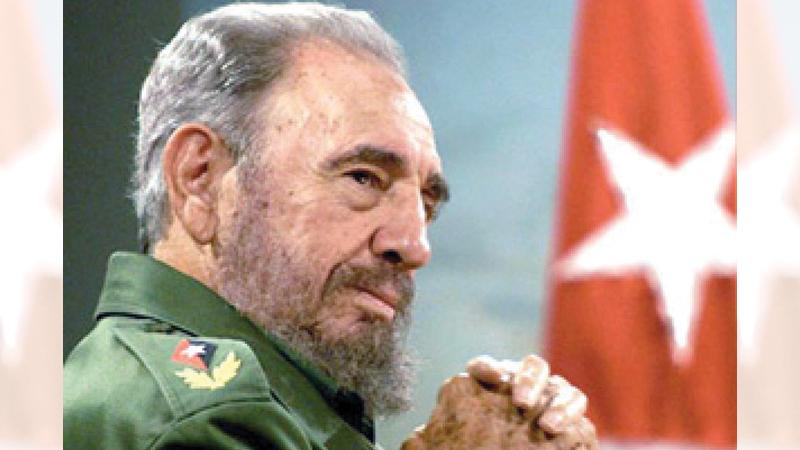
Cuban people and the Republic of Cuba, commemorate with lot of prestige the great Cuban revolution that succeeded in 1959. Even today, the Cuban fellow citizens celebrate the memories that led the country to the most respected series of social changes backed by the armed uprising invasion to the Moncada Military Barracks on July 26, 1953 in Santiago De Cuba as the memorable launch for the struggle for Freedom of Cuba, that finally ended up in early 1959; the day of the great Cuban revolution.
That is the day that marked the end of the destructive, cruel and ruthless dictator regiment of Fulgencio Batista ending and leading the way to the most memorable revolutionary victory for the Cuban people and its country.
By the days of this attack known globally and was led by Comrade Fidel Castro and his brother Comrade Raul Castro as well as many other fellow youths; exactly 120 young men, the Republic of Cuba was overwhelmingly distressed in almost every aspect of the nation and the country as a whole. Batista, who hailed from a high-level military position as a colonel, expressed a ruthless regimen of government administration using a number of poppet presidents for more than a decade from 1940 and gradually destroyed this so beautiful country by 1944. His regiment further grew with more cruel forms of its own appearance by 1952 as he became the dictator president heavily backed by the United States and the power of West.
Continuing struggle
The night before the movement, the men gathered at a farm nearby, where they learned what the objective was. The plan was to secure the barracks and gain possession of the weapons stored within, and to use the building’s army communications equipment to spread news and messages for several hours to conduce the Batista military.
In the meantime, the weapons would be removed and hidden throughout the city to be used in the continuing struggle and also to undertake radio station to broadcast the revolution speeches to mobilise the public with the ultimate aim of bringing down the Batista government.
In this armed uprising movement, the first group divided into many sub-components of the Moncada Barracks, and those movements were headed by Comrade Abel Santamaria, who could seize the Hospital Section which was to the fortress; the second one, in which Comrade Raul Castro participated, occupied the Courts Complex which was a tall building from which the main movement was launched; the third group, which included 90 members and was headed by Comrade Fidel Castro, seized Administrative Complex of the Moncada Barracks Complex.
However, these actions were thwarted when an unforeseen set of Batista’s government guards began a skirmish and this counter firing alerted the garrison, forcing the attackers, lower in numbers and weapons, to withdraw.
By the time, as the fighters were weakening their strength, the Batista regime responded with brutal cruelty.
Batista ordered to kill 10 revolutionaries every one soldier deal in action, eliminated constitutional guarantees in all the national territory and censured the press and the radio.
Trial against leaders
Then, there was a subsequent trial against all the leaders, and in that the young lawyer Fidel Castro conducted his self-defence by himself. In his speech, he denounced the crimes committed by the tyranny and the hardships the people had suffered under that Republic, while presenting the social programs to be undertaken after the triumph of his cause.
However, the Court’s decision was in favour of the Batista government and the leaders of the group had to imprisoned for some period, and after 22 months in prison, till they were granted amnesty due to strong and popular social pressure motivated by mothers of the prisoners and the Cuban congress at that time granted a Bill approving the rebels the freedom and as a result they were allowed to live in exile.
Moreover, this powerful uprising caused against the Moncada Government Barracks, made sufficient confidence within the minds of the youth to continue the struggle for freedom to a definite victory of their own. The struggles continued in fresh waves.
They began organising a massive rebellion insurgency headed by 82 highly motivated and trained young men of whom the highest leadership was held by Comrade Fidel Castro and the preparations for final encounters were made carefully.
These preparations ended by continuing to launch massive invasive movements against the Batista military forces and finally in the area called Sierra Maestra Mountain Range in the Cuba’s Eastern Terrains and declared with victorious proclamations ending the ruthless regiment of dictator Batista in 1959.
The battle damage to the Moncada Barracks was quickly repaired by the Cuban people. After the revolution, the Moncada became a fortress and was converted into a school in 1960. In 1978, Comrade Castro ordered certain peculiar rebuilding activities and the Barracks main building property was converted into a Historical Museum of the Republic of Cuba.
Finally, The Moncada Attack changed the whole World by commencing the historical Cuban Revolution where United States atrocities against the communist countries were totally controlled.
The writer is the Treasurer / Ex-Secretary General of the Sri Lanka-Cuba Friendship Society
